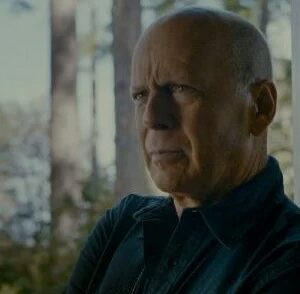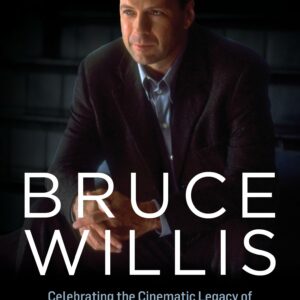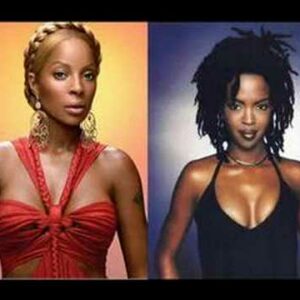Tina Turner, born Anna Mae Bullock on November 26, 1939, in Nutbush, Tennessee, transformed herself from a rural Southern girl into an international music legend. Her story is not just about musical prowess; it’s a tale of relentless perseverance, personal reinvention, and sheer grit. Rising to fame in an era when Black female artists were often marginalized, Turner faced numerous personal and professional challenges, all of which she conquered with an indomitable spirit.
Her early career, marked by her collaboration with Ike Turner, was as tumultuous as it was successful. As the lead singer of the Ike & Tina Turner Revue, she quickly gained notoriety for her powerhouse performances and fiery stage presence. With songs like “A Fool in Love” and “River Deep, Mountain High,” she emerged as a voice that couldn’t be ignored. Yet, behind the scenes, her life was fraught with the emotional and physical abuse inflicted by Ike. The personal toll of their volatile relationship took center stage in the narrative of her rise to fame.
For nearly two decades, Turner was subjected to the control and violence of Ike Turner, who managed her career and orchestrated much of her professional trajectory. But it was her decision to leave Ike in 1976 that showcased her resilience in its truest form. She walked away from their successful act with almost nothing—just her name and her resolve. In doing so, Turner set a powerful precedent for women in the music industry—and beyond—to prioritize their safety, dignity, and well-being over fame or fortune. Her bravery in escaping an abusive marriage, while under the glaring spotlight of the public eye, was a profound act of resilience that still resonates today.
Trailblazing as a Female Rock Icon
Breaking away from Ike wasn’t just a personal liberation; it was a musical one. Tina Turner reinvented herself as a solo artist in the late ’70s and early ’80s—a difficult task in a male-dominated industry that wasn’t always welcoming to women, especially those with a history like hers. The music world often celebrates male resilience—artists who reinvent themselves and rise from the ashes—but rarely does it offer the same narrative arc to women. Turner defied those odds.
Her 1984 album Private Dancer was a seismic shift in her career and in rock music as a whole. At the age of 44, an age considered “past prime” for many female performers at the time, Turner achieved what many thought impossible: she became a superstar on her own terms. The album’s hit single, “What’s Love Got to Do with It,” showcased her versatility and undeniable magnetism. Blending pop, rock, and soul, Turner broke through age, race, and gender barriers to solidify herself as a rock icon.
In a music industry where women, particularly Black women, were often relegated to the sidelines, Turner stepped into the limelight and claimed her space. She performed with an electrifying intensity that captivated audiences, defying stereotypes of what a female rock performer should be. Her performances were raw, energetic, and unapologetically powerful. Turner didn’t conform to the demure, polished persona that was often expected of female artists—she was bold, daring, and explosive on stage.
Turner’s success paved the way for future generations of female artists who didn’t just want to be pop princesses, but rock queens. Her legacy can be seen in the careers of women like Beyoncé, Lady Gaga, and Pink, who all credit Turner as a major influence. Turner showed these women—and millions of fans worldwide—that it was possible to be strong, independent, and utterly in control, both as a performer and as a woman.
Her Impact on Musical Styles
Tina Turner wasn’t just a rock star; she was a genre-defying artist who bridged gaps between rock, soul, pop, and R&B. Her voice, raspy and rich with emotion, was a natural fit for the bluesy sounds of her early career with Ike Turner. But as she evolved, so too did her musical style. By the time she released Private Dancer, Turner had seamlessly blended the raw energy of rock with the soulfulness of R&B and the mass appeal of pop.
In the early days, songs like “Proud Mary” encapsulated her ability to take a song and make it her own. Originally a Creedence Clearwater Revival hit, “Proud Mary” was transformed by Turner’s voice and stage presence into something more than just a cover—it became her signature. Her version was a fusion of rock and soul, with a rhythm and intensity that only Turner could deliver.
Turner’s work in the ‘80s and ‘90s pushed these boundaries even further. With tracks like “We Don’t Need Another Hero” and “The Best,” she blended powerful rock ballads with pop sensibilities, creating a sound that was accessible yet authentic. Her collaborations with major producers like Terry Britten helped cement her place in the rock-pop hybrid genre, but it was always Turner’s voice—her raw, emotional, uncontainable voice—that was the centerpiece of it all.
Artists across genres have cited Turner as a profound influence on their work. Beyoncé’s mix of powerful vocals and commanding stage presence owes much to Turner, while pop icons like Janet Jackson and Madonna have credited her as paving the way for women to have complete artistic control. Even artists in rock and alternative genres, like Florence Welch of Florence + the Machine, have been vocal about Turner’s influence on their musical and performance style. Turner’s legacy is in her defiance of being boxed into any one category or genre; she transcended them all.
Cultural and Generational Impact
Tina Turner’s influence extends far beyond her music. Over a career spanning more than five decades, Turner became a cultural icon, a symbol of resilience, and a role model for women everywhere. She defied expectations and shattered norms, showing that success wasn’t limited by age, gender, or background.
At a time when the music industry was notorious for discarding women as they aged, Turner made it clear that age is not a barrier to success. Her comeback in her 40s, with Private Dancer, was nothing short of revolutionary. It wasn’t just the album’s commercial success that was remarkable—it was the fact that Turner had turned societal expectations upside down. She proved that a woman could age gracefully, all while remaining relevant, creative, and immensely successful in an industry known for its relentless pursuit of youth.
Her influence went beyond the stage, touching the lives of multiple generations of fans. Turner’s ability to connect with audiences of all ages and backgrounds made her a unifying force in music. Her perseverance, both in her personal life and her career, inspired not just fellow musicians but individuals across the globe. She became a beacon of strength for women who had experienced abuse, showing them that it was possible to reclaim their power and rebuild their lives.
Turner’s career also opened doors for other women of color, showing them that they, too, could succeed in the predominantly white, male-dominated world of rock and pop. Her influence on cultural and racial identity in the music industry cannot be overstated. Turner’s music transcended race, and in doing so, she became an icon for people of all backgrounds.
Legacy of Empowerment
If there’s one word that defines Tina Turner’s legacy, it’s “empowerment.” She embodied the spirit of independence, resilience, and strength that has inspired countless people—especially women—to take control of their own destinies. Her decision to leave Ike Turner, risking her career and her livelihood, was a profound act of empowerment. It sent a message to women everywhere that they, too, could escape toxic situations and emerge stronger on the other side.
Turner’s life story became a blueprint for overcoming adversity. Her autobiography I, Tina, and the subsequent biopic What’s Love Got to Do with It, laid bare the realities of her abusive marriage and her eventual triumph. These works didn’t just cement her place in the cultural lexicon—they also served as a source of hope and inspiration for survivors of domestic abuse. Turner became more than just a musical icon; she became a symbol of resilience, showing that it’s possible to rebuild your life, no matter how difficult the circumstances.
In her later years, Turner continued to inspire with her grace and dignity. Even after retiring from performing, she remained an icon of empowerment, reminding people that they could reinvent themselves at any stage of life. Her final world tour, Tina!: 50th Anniversary Tour, was a testament to her enduring appeal and strength, proving that age is no obstacle when it comes to passion and talent.
Tina Turner’s legacy is not just in her music but in the lives she touched. She broke barriers, shattered expectations, and showed the world what it means to be truly empowered. Her influence continues to resonate with new generations of artists and fans alike, ensuring that her story of resilience, independence, and empowerment will endure for decades to come.





